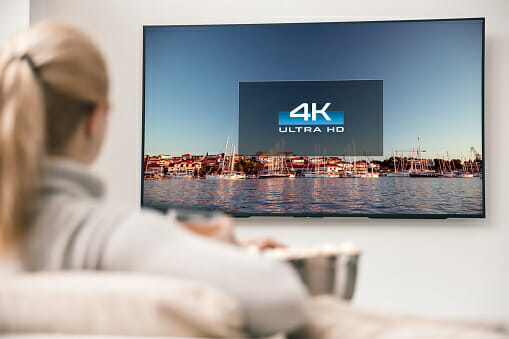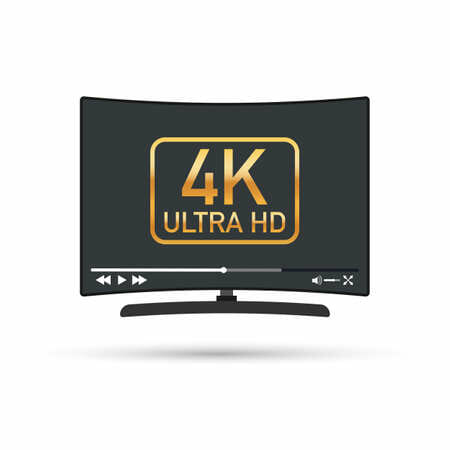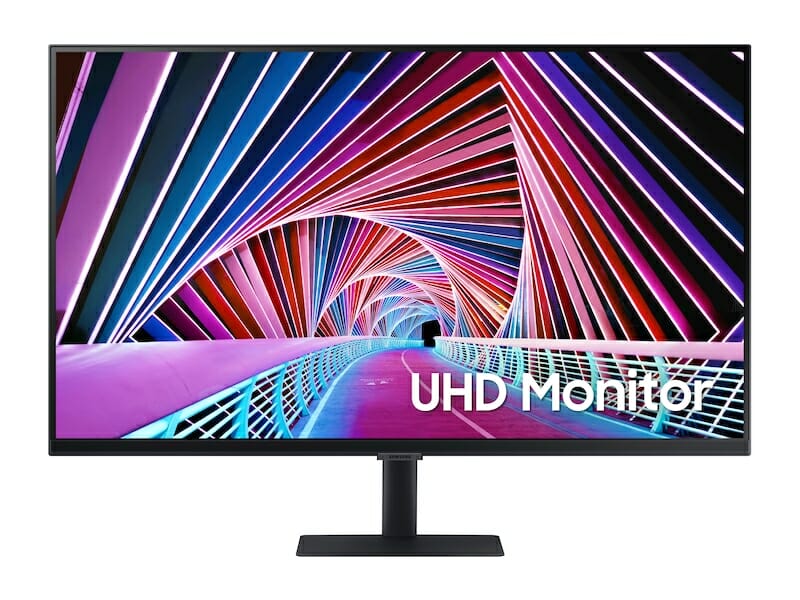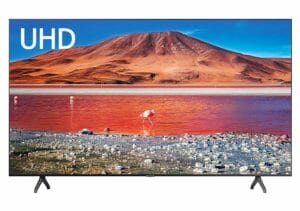Table of Contents
When you want to purchase a monitor or a TV screen, the minimum resolution is an essential factor to consider. TV resolution has seen tremendous growth from HD TV resolution to UHD and 4K resolution TV screens. High resolutions mean better quality images that ensure an incredible watching experience.
However, the many types of resolutions in the market can be confusing. For instance, what is the difference between high-definition resolution and Ultra HD TVs? Here, we'll look at what UHD means and how you can differentiate it from other types of resolutions in new TVs.
What Does UHD Refer to?
Ultra HD or UHD stands for ultra-high definition. It is an umbrella term that comprises HD resolution and other higher resolutions than high definition. It means the screen has more pixels than HD resolution, leading to higher quality images. You'll notice a big difference between Ultra HD resolution and HD, even with a human eye. It features higher frame rates and more realistic colors.
You'll enjoy a more immersive watching experience using an ultra-high-definition TV due to its life-like images.
Is 4k the Same as Ultra High Definition? What is 4K UHD?
According to the consumer electronics association, a 4K TV should meet various requirements. For instance, it should feature an aspect ratio of 16:9 or wider.
4K resolution is a name assigned to a TV that features four times that of a Full HD TV (1080p). In comparison, a Full HD TV features 2 million pixels, a 4K Ultra HD TV features 8 million pixels crammed together in the same space. The Ultra HD TVs offer more accurate colors and clearer images with a higher pixel count and higher resolution.
You might see the screens labeled as 4K, 4K UHD, or UHD, but they all talk about the same monitors with the same resolution. Today, 4k TV screens have overtaken HD and UHD monitors to become the TV resolution of choice for all major manufacturers. You'll find the 4K resolution on most monitors except the small TVs that cap out Full HD resolution.

Having a 4K TV doesn't mean you require lots of 4K movies and TV shows because 4K TVs can also display images of lower resolution. As such, your favorite TV series and shows with a lower resolution will play as they are supposed to on a 4K display. Your 4K TV can even scale up some of the content such that it'll look normal while playing on a 4K TV screen.
At normal viewing distances, a 32-inch display is the ideal size of a PC monitor and will offer the most benefits for the user. 4K resolution on a smaller screen makes excellent monitors for video editors. It allows you to zoom in and reframe your videos and still end up with quality images. Although the screen size doesn't matter, 4K is superior to other resolutions, including HD.
What Is 4K Resolution?
Most TV companies define 4K resolution as 2160p or 3840 x 2160 pixels. A Full HD image resolution is 1080p or 1920 x 1080p. A 4K resolution display comes with almost 8 million pixels that are four times what a Full HD TV can display.

You can look at your TV like a grid that features rows and columns. A Full HD TV will have 1080 rows and 1920 columns. On the other hand, a 4K resolution monitor will double up the resolution in all directions, resulting in four times pixel density. That means you can fit the pixels from your Full HD TV set onto a quarter of a 4K Ultra HD TV.
4K refers to something different, whether referring to a projector in a theater or your TV set at home. It refers to a 4096-pixel horizontal resolution, which is the same resolution set for Digital Cinema. Each movie comes with its varying aspect ratio, referring to the shape of the rectangle of your screen, and the vertical pixels are not specified.
You can notice the difference between a 4K pixel resolution TV and a 1080p, especially if you switch from a TV with the same screen size. Most 4K TVs are 55 inches and above. If you switch from an HD TV to a 4K resolution TV, you're introducing four times more details to the screen. As such, you'll enjoy higher-quality images and an enhanced watching experience.
Which Is the Better Option Between UHD and HD?
UHD offers better resolution and higher quality images than HD resolution. However, UHD TVs are more expensive than their HD counterparts. If you are working with a budget, HD delivers a fine viewing experience, but UHD elevates the experience a notch higher.
You have two types of UHD, including the 4K UHD and the 8K UHD. Both types are progressive displays, but the 4k UHD option is more affordable and common. A UHD TV features four times the pixels you'll find in an FHD TV (see also UHD vs NanoCell)
Additionally, UHD TVs feature LCD display technology, including QLED, LED/LCD technologies. They also feature OLED technologies. Although UHD is dependent on resolution, TV manufacturers have included other features, including a wider color gamut and HDR (see detailed HDR guide) to offer better visuals.
To watch FHD content, you require all connections and platforms to support FHD. The same is true for UHD and QHD content. As such, the TV set, the HDMI cable, the content, streaming device, and media player should be UHD compatible.
HDMI is the standard connection for UHD and FHD source devices. You'll require a high-speed HDMI cable for UHD and HD content. The cables also work with UHD Blu-ray players and Blu-ray discs, most satellite companies, PCs, laptops, and video gaming consoles.

Is 4K UHD TV Worth Buying?
Before you can decide whether it is worth buying a UHD TV, it is worth noting that the TVs are incredibly expensive. Of course, the television comes with better graphics and is a perfect choice for people looking for enhanced visuals. If you like crisp images and videos, the 4K UHD is an option you should consider.
A 4K TV is a worthy investment if you want to take advantage of the 4K resolution. If you don't, the 1080p option is still an excellent option. Although there is limited content available in the 4K resolution, there is a high possibility of 4K resolution content in the future. You'll be able to stream videos from various sites with 4K resolution, including Netflix.
If you are a content creator, 4K resolution televisions or projectors are also a perfect pick. If you create content such as photos, videos, and other graphics, you'll require the best display for the content.
Hybrid Log Gamma
Hybrid log gamma is a 4K HDR TV broadcast format. Other HDR formats include the HDR10+ and Dolby vision. If you want to purchase a 4K HDR TV, or a HDR monitor, HLG is a term that you shouldn't ignore. The format offers a more convenient HDR solution than the HDR system.
The HLG format is more convenient as it combines high dynamic range and standard dynamic range images into a single video signal. The video can play as HDR on HDR screens and SDR on SDR screens. This ensures no viewer is left out irrespective of the type of TV.
The video signals can be delivered in one bitstream on HEVC standard format or VP-9 over HDMI.
Is Crystal UHD Better Than Regular UHD?
Crystal UHD is a marketing term used by Samsung to advertise its LCD TVs with a Crystal Processor 4K. The processor can make scenes look more life-like due to its advanced color mapping technologies.
Comparing regular UHD and Crystal UHD may not be fair as it compares a resolution specification and a processor. Since the video-processing features are similar, they shouldn't determine whether to buy a TV or not.
So, which is better between regular UHD and Crystal UHD? Crystal UHD will add more contrast to your images, resulting in clearer scenes.

However, that doesn't mean it is a better option than regular UHD. It'll be a challenge determining which one is better without considering other TV features.
Conclusion
4K UHD Tv refers to a display that features at least eight million pixels. For televisions, the standard resolution for a 4K is 3840 x 2160. The resolution is higher in digital cinema 4K, which is the 4k movie theater’s resolution. It is 23 times the pixels in a standard-definition television and four times the 1080p display (see also QHD meaning).
A 4K resolution offers clearer and high-quality images for an immersive watching experience. You'll require 4k content and compatible connectors to enjoy the best watching experience. Even if you don't have the 4K content, several companies, including LG, Samsung, and Sony, scale your lower resolution and 1080p resolution content to 4K. Although 4K monitors are expensive, they are an excellent option for anyone looking for crisper images.


